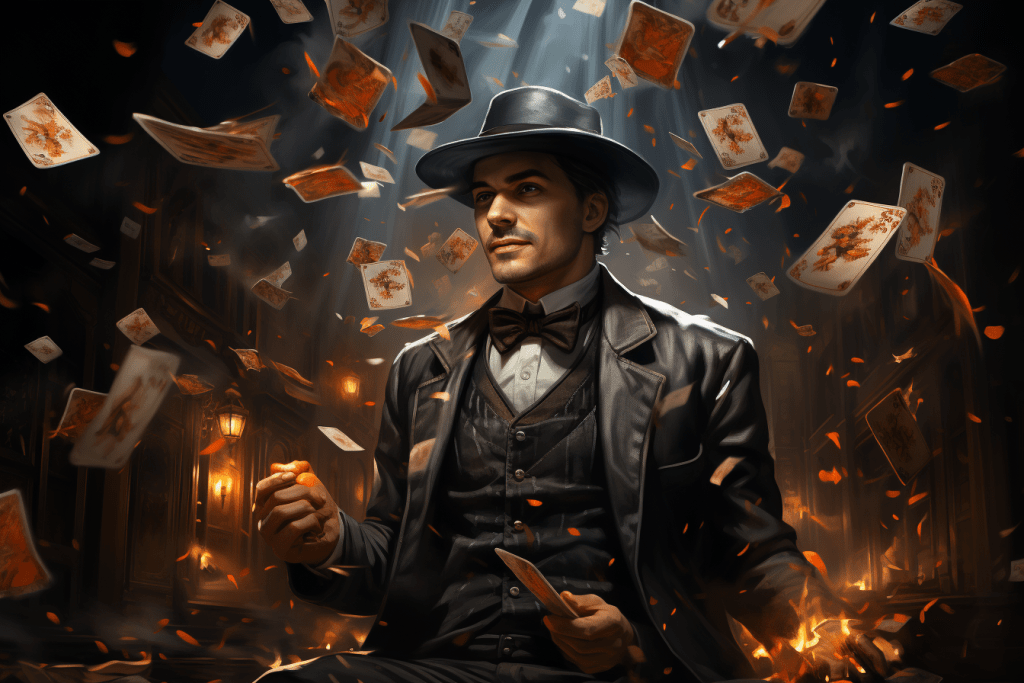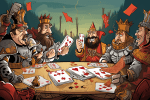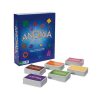Card Magic Exposed: The Science Behind the Illusion
Card magic has fascinated audiences for centuries, captivating and perplexing people with its seemingly impossible tricks. Whether it’s a magician effortlessly finding a chosen card or making a card disappear and reappear in unexpected places, card magic is a masterful combination of artistry, psychology, and sleight-of-hand. But what is the science behind the illusion? Let’s explore the inner workings of card tricks and the secrets that make them so captivating. Prepare to be amazed and enlightened!
The Psychology of Card Magic
Captivating the Mind: The Psychological Elements of Card Tricks
Card magic is as much about manipulating the mind as it is about manipulating the cards. Magicians employ various psychological techniques to enhance the illusion and create a sense of wonder in the audience.
Misdirection: The Art of Distraction
Misdirection is the key to the mesmerizing effects of card magic. Magicians are adept at diverting the audience’s attention away from their secret moves, ensuring that their sleight-of-hand remains undetected. Through a combination of verbal cues, gestures, and visual stimuli, they skillfully redirect focus, exploiting our attentional biases. Let’s delve into the psychology behind misdirection and uncover how magicians take advantage of our cognitive vulnerabilities.
Redirecting Attention: Magicians understand that our attention is a limited resource, easily swayed by external stimuli. They capitalize on this by strategically directing our focus to specific areas while subtly manipulating cards elsewhere. By creating a compelling point of interest or a moment of suspense, they effectively divert attention away from the secret actions taking place.
Cognitive Biases: Our minds are susceptible to various cognitive biases that magicians exploit to enhance misdirection. For instance, the magician may employ the “Inattentional Blindness” bias, where our attention becomes so narrowly focused that we completely miss other important details or actions happening simultaneously. This allows the magician to perform sleight-of-hand maneuvers right under our noses.
Gestural Misdirection: Magicians harness the power of non-verbal communication to deceive our perception. Through precise hand movements, gestures, and body language, they create intentional distractions that draw our attention away from the critical moments of their manipulations. By capturing our visual focus with intentional movements, they effectively conceal the secret actions happening elsewhere.
Psychological Priming: Magicians utilize the concept of priming to shape our expectations and influence our attention. They may use subtle verbal suggestions or establish a context that primes us to anticipate specific outcomes or actions. By preoccupying our minds with expected events, they slyly perform secret maneuvers without raising suspicion.
Understanding the psychology behind misdirection unveils the intricate techniques magicians employ to exploit our attentional biases. Through strategic redirection of attention, leveraging cognitive biases, utilizing gestural misdirection, and employing psychological priming, they create an immersive experience that captivates and astonishes audiences. The artistry of misdirection lies in the magician’s ability to guide our attention exactly where they want it, ensuring the success and wonder of their card tricks.
Psychology of Perception and Memory
Card magicians leverage the limitations and biases of human perception and memory to their advantage. By understanding how our minds work, they manipulate our experience of the trick and enhance the illusion. Here are some important phenomena that contribute to the success of card magic:
Change Blindness: Our minds have a tendency to overlook subtle changes in our visual environment. Card magicians skillfully use this phenomenon to execute tricks where cards seemingly change or transform right before our eyes, but our brains fail to register the alteration.
Selective Attention: Our attention is naturally drawn to specific elements while filtering out others. Magicians exploit this phenomenon by directing our attention to one place while secretly performing sleight-of-hand maneuvers elsewhere. This allows them to make cards appear or disappear seemingly out of thin air.
Limitations of Short-Term Memory: Our short-term memory has limited capacity, making it susceptible to manipulation. Magicians exploit this by presenting sequences of cards or asking us to remember specific details, only to surprise us with a reveal that defies our recollection.
Understanding these psychological concepts provides insights into how card magic captivates our minds and makes the impossible seem real. By skillfully exploiting our perception and memory, magicians create astonishing illusions that continue to mesmerize audiences worldwide.
Influence and Suggestion
Card magicians are masters of influence, using a variety of techniques to shape our thoughts and decisions. These influence techniques are carefully crafted to guide us towards the desired outcome. Here are some secrets behind these powerful techniques:
Framing: Magicians use framing to shape our perception of a situation or choice. By presenting options in a particular way, they steer our attention towards a desired outcome. For example, they may present a choice between two cards but emphasize certain characteristics or attributes to influence our selection.
Verbal and Non-Verbal Cues: Magicians pay careful attention to their language and body language, leveraging subtle cues to direct our attention and thoughts. They may use specific words or gestures to subtly suggest a card or steer our focus away from their secret moves. These cues help create an atmosphere of influence and control.
Social Proof: Magicians often rely on the concept of social proof to influence our decisions. They may involve spectators in the trick, making it seem like others have made certain choices or experienced specific outcomes. This taps into our tendency to follow the crowd and increases the likelihood of us making similar choices.
Anchoring: Anchoring involves establishing a reference point that influences subsequent perceptions and judgments. Magicians may use this technique by first presenting an extreme or exaggerated effect, creating a benchmark in our minds. Subsequent tricks or effects may then appear more impressive or surprising in comparison.
Psychological Manipulation: Magicians understand and utilize various psychological principles to manipulate our thoughts and emotions. They may employ techniques such as misdirection, creating a diversionary focus while subtly influencing our decisions or perceptions. They exploit our cognitive biases, such as confirmation bias or the illusion of control, to steer us towards the desired outcome.
By skillfully applying these influence techniques, magicians create an environment where our thoughts and decisions can be subtly guided. Their mastery of framing, verbal and non-verbal cues, social proof, anchoring, and psychological manipulation allows them to enhance the overall impact and success of card tricks.
The Artistry of Sleight-of-Hand
Mastering the Moves: The Skillful Techniques of Sleight-of-Hand
Sleight-of-hand is the magician’s toolbox, enabling them to perform seemingly impossible feats with playing cards. It involves intricate hand movements, precise timing, and years of practice. The artistry behind sleight-of-hand and the techniques magicians use can create astonishing card magic:
Palming and Switching Techniques
Palming and switching are fundamental techniques in the magician’s repertoire. Through these moves, they can make cards disappear, change places, or transform into entirely different cards.
False Shuffling and Cuts
False shuffling and cuts allow magicians to maintain control over the card order, even when it appears that the deck has been thoroughly shuffled. They create the illusion of randomness while secretly preserving specific card arrangements crucial to the trick.
Forces and Controls
Forces and controls are techniques that allow magicians to influence the selection of a card without the audience’s knowledge. Through these methods, they can make spectators choose a predetermined card or ensure a card ends up in a specific position in the deck.
Insights from the Experts
To gain a deeper understanding of card magic, we turn to the experts themselves. By learning from their experiences, advice, and perspectives, we can gain a newfound appreciation for the intricacies of card magic. Here are six tips to becoming a card magician:
- Practice Makes Perfect: Professional magicians emphasize the importance of dedicated practice. They spend countless hours refining their moves, honing their techniques, and perfecting their performances. Mastery of sleight-of-hand requires persistence, patience, and a commitment to continuous improvement.
- Presentation Is Key: Magicians understand that the presentation of a card trick is just as important as the mechanics behind it. They focus on creating a compelling narrative, using storytelling techniques, humor, or emotional hooks to engage their audience. The way a trick is presented greatly enhances its impact and makes it more memorable.
- Originality and Innovation: Magicians strive to bring new and unique elements to their performances. They push the boundaries of traditional tricks, experimenting with novel approaches, incorporating new technology, or creating their own variations of classic effects. Originality and innovation help magicians stand out and leave a lasting impression on their audience.
- Connection with the Audience: Professional magicians emphasize the importance of establishing a connection with the audience. They understand that magic is a shared experience, and they actively engage their spectators, involving them in the trick and creating a sense of wonder and participation. Building rapport and connecting on a personal level enhance the overall impact of the performance.
- Adaptation and Flexibility: Magicians acknowledge the need to adapt to different environments, audiences, and performing conditions. They are skilled at improvisation and have alternative methods or routines to suit various situations. This adaptability allows them to deliver exceptional performances under any circumstances.
- Attention to Detail: Professional magicians pay meticulous attention to every aspect of their performance. They carefully select their props, consider the timing and pacing of their routines, and ensure their movements are precise and natural. Attention to detail creates a polished and professional presentation that captivates the audience.
In closing
Card magic is a captivating art form that blends science, psychology, and skill to create awe-inspiring illusions. By exploring the psychology of card magic, the intricate techniques of sleight-of-hand, and gaining insights from professional magicians, we have taken a glimpse behind the curtain and unveiled the secrets of this mesmerizing craft. So, the next time you witness a mind-blowing card trick, remember the science and dedication that lies beneath the illusion, and let yourself be carried away by the wonder and magic that card tricks bring to life.
Magic Resources
Penguin Magic – a great newsletter and website for magicians of all kinds
You can do magic, and here’s how – article in our magazine.
Sleight of Card: The basics – article in our magazine
The Ellusionist – shop magic tricks and amazing card decks.





